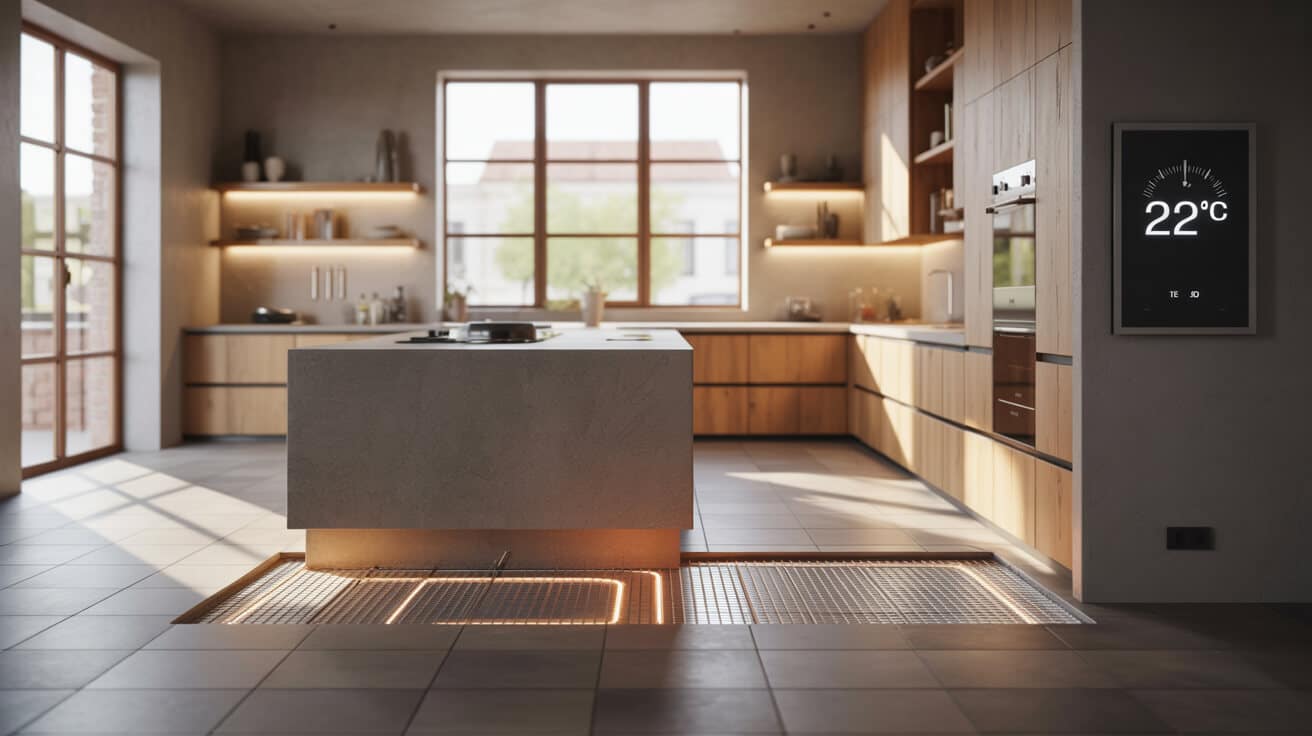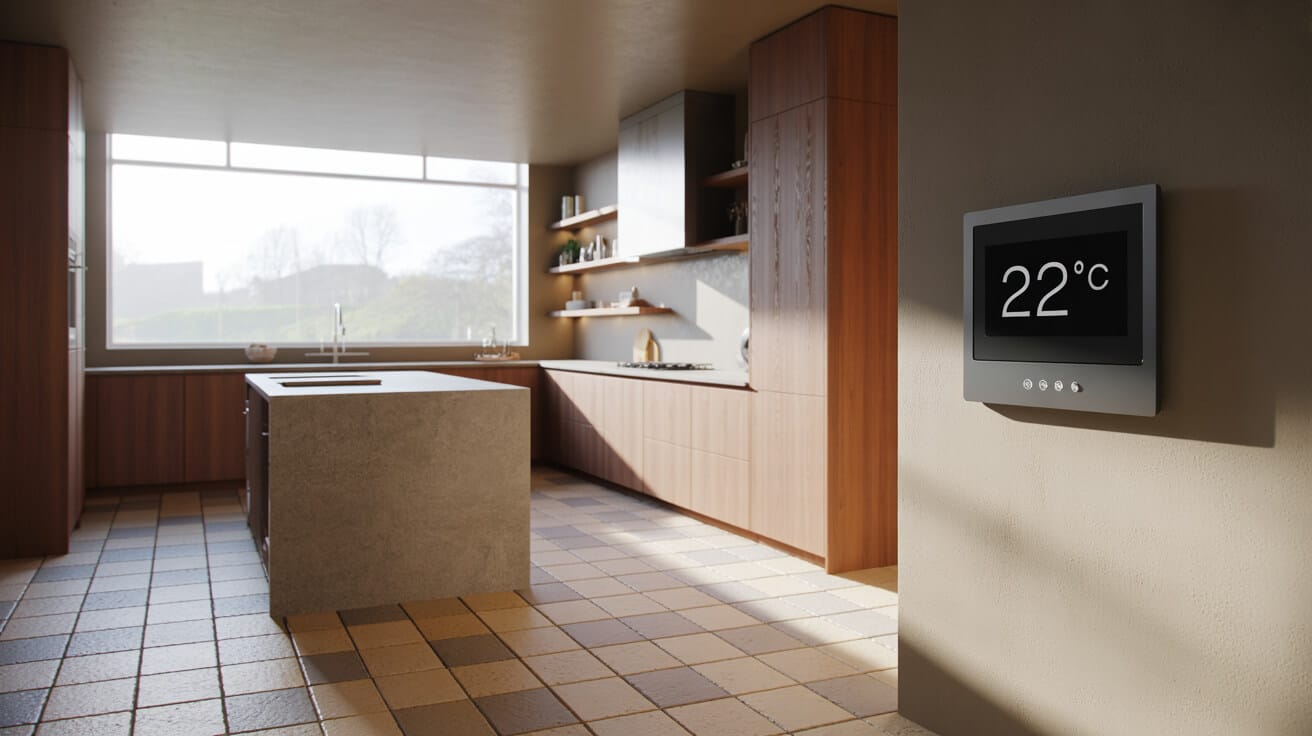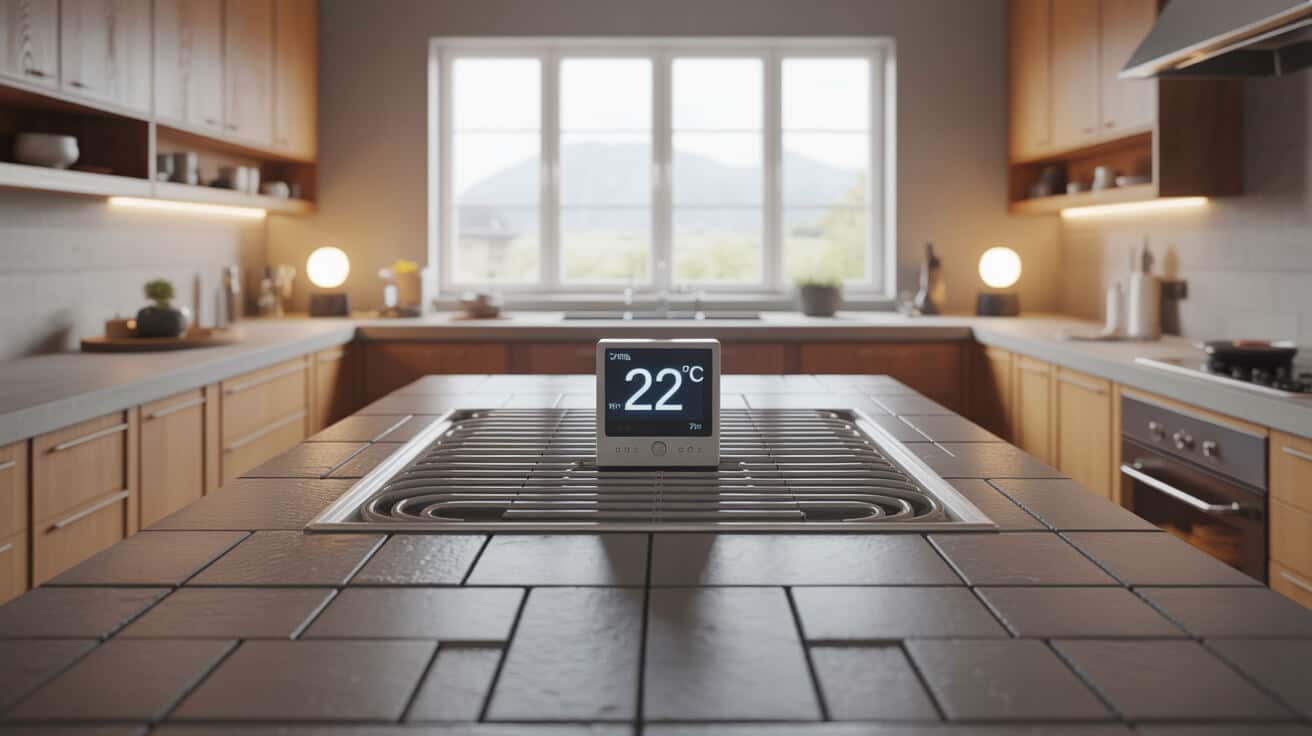Discomfort lingers when warmth is delayed, especially where residential or workspaces depend on underfloor heating as their primary method for climate control. The expectation of rapid, uniform heat often collides with the technical realities of pipe layouts, floor construction, and system inertia, prompting immediate concern from homeowners, landlords, and facilities managers. Beneath everyday dissatisfaction lies a web of engineering decisions, installation standards, behavioural adjustments, and operational oversight—each contributing to or mitigating the experience of slow thermal response.
Property managers, asset owners, and tenants face heightened scrutiny around comfort delivery, energy usage, and the reliability of heating provision. The inability to predict or manage prolonged lag times reverberates across occupancy satisfaction, cost control, energy ratings, and compliance pressures. Firms such as Plumbers 4U have responded to these needs by embedding diagnostic transparency and system optimization into their services, supporting your quest for rapid warmth and regulatory certainty.
Lead
Thermal lag in underfloor heating emerges as a multidimensional challenge positioned at the intersection of material science, building physics, asset management, and user psychology. Designed to deliver comfort and efficiency through radiant panels within floor constructions, these systems are subject to constraints imposed by floor build-up, insulation placement, energy sources, and user expectations about immediacy. The delay between switch-on and perceptible warmth remains one of the most frequently reported sources of discontent in both new builds and retrofits, underlining the complexity of delivering predictability in diverse real-world contexts.
When your comfort is contingent on the predictability of system performance, any deviation from the expected—prolonged mornings with cold tiles, offices where warmth is slow to arrive—can profoundly affect perception of quality and value. These experiential realities are shaped by choices made during design, installation, commissioning, and ongoing service. Slow heat-up, therefore, is more than a technical specification; it is a lived, measurable dimension of building utility, directly influencing satisfaction, compliance, and energy stewardship.
Etymology or name origin
“Underfloor heating” denotes a heating method where radiant or conductive energy is delivered from below the floor surface, customarily through fluids circulating in embedded pipework (hydronic systems) or via electrical resistance cables and mats (electric systems). The expression “slow heat-up” has entered building parlance to describe delayed system responsiveness, often qualified by terms such as “thermal inertia,” “response time,” and “lag period” in technical documentation. “Thermal mass” and “radiant lag” are widely adopted in specifications and commissioning protocols, underscoring the relationship between floor build-up and heating response. North American standards favour “radiant floor heating,” while UK and European commentary privileges “underfloor,” with subtle distinctions around the physical and psychological framing of comfort.
Overview / context
Underfloor heating forms a core element of high-performance building services, valued for its capacity to provide steady, low-draught warmth and to maximise interior flexibility by removing the need for visible radiators. Its design inherently relies on the principle of delivering comfort by heating the lowest surfaces in a space, producing even temperatures from floor to ceiling. This approach aligns with contemporary demands for energy efficiency, compatibility with lower-temperature energy sources, and enhanced indoor air quality.
The phenomenon of slow heat-up emerges from the convergence of expectations—your desire for prompt, controllable warmth—and system behaviours governed by engineering realities. When insulation is insufficient, controls are misconfigured, or thermal mass is high, floors may remain cold for hours after activation. In residential housing, slow response can lead to increased energy use, as users override settings in pursuit of faster comfort. Within commercial and rental property management, thermal delays propagate through downtime, tenant dissatisfaction, maintenance escalation, and compliance risk, underscoring the necessity for periodic assessment and optimization.

History
Origins
Ancient civilizations, including the Romans with their hypocaust systems and Koreans with “ondol,” pioneered floor-based heating by moving heated gases or fluids beneath living surfaces. These early configurations optimised available fuels to extend thermal retention across daily cycles, anchoring the concept of radiant floor warming in cultural tradition.
Industrial emergence
The twentieth century brought a shift from open fire and primitive ducts to advanced hydronic systems using steel, then polymer pipes, combined with sophisticated manifolds and primary heating sources. After World War II, underfloor heating saw widespread adoption in institutional, residential, and commercial projects—particularly across Europe—spurred by both comfort appeal and spatial design freedom.
Contemporary evolution
Regulatory tightening in the late twentieth and early twenty-first centuries drove a focus on insulation, response modelling, and commissioning standards. Modern systems feature digital controls, sensor-driven zoning, adaptive schedules, and integration with renewable energy sources. Organisations such as Plumbers 4U have curated best practices by merging technical standards with practical diagnostics, facilitating reliable, compliant installations.
Concept / description
Thermodynamic principles
Radiant heat transfer from the floor provides perceptible warmth at lower ambient air temperatures compared to convective systems. The delivery of energy from below depends on the interaction of pipe or cable layout, insulation, screed thickness, heat source output, and floor finish. When energy is supplied—either by hot water from boilers/heat pumps or electric current—thermal energy must move through every intermediary material before it reaches your feet or the room air. The time taken to reach target temperature (slow heat-up) is governed by the ability of these layers to absorb, store, and transmit energy efficiently.
System architecture
Key components include:
- Pipework or electric mats: arranged in loops or grids with calculated spacing for even coverage.
- Manifolds: for distributing flow and balancing circuits in hydronic systems.
- Valves and actuators: to enable zoning, manage demand, and permit remote scheduling.
- Insulation boards or layers: beneath the system, reducing heat loss downward.
- Screed or surface finish: dictating thermal mass and resistance.
- Control interfaces: (programmable thermostats or centralised controllers) that schedule heating activation according to occupancy, forecast, or energy tariff.
Physical causes of slow heat-up
- High thermal mass: Thicker screeds, tiles, or wet systems increase lag by requiring more energy to change temperature.
- Floor coverings: Materials with high R-values (such as thick carpets) resist energy transfer to usable surfaces.
- Hydraulic or electrical inefficiencies: Insufficient flow, airlocks, blockages, or degraded elements limit power transfer.
- Insufficient insulation: Causes energy loss away from usable surfaces, extending or flattening the heating curve.
- Control errors: Poorly calibrated thermostats, misaligned time settings, or lack of pre-emptive programming reduce effective output.
Your expectation for instant warmth is frequently conditioned by previous experience with radiators or forced-air systems. The underlying behaviour gap between intent and response is amplified in larger or less well-insulated properties, requiring both customer education and technical adaptation.
Functionality / purpose / applications
Delivering comfort
Uniform surface temperatures minimise draughts and maintain comfort even at lower air setpoints, contributing to fewer complaints about cold spots or uneven temperatures. These systems are particularly valued where bare floor finishes are preferred, such as kitchens, bathrooms, or living areas with more frequent foot traffic.
Energy synergy
Underfloor systems achieve optimal efficiency when paired with Condensing Boilers, heat pumps, or solar thermal inputs, which are designed to supply lower-temperature heat. With careful programming, your energy use and bills decrease, especially in newer construction complying with performance-based regulations.
Asset longevity and lifecycle
Reducing the frequency of on-off cycles and system shocks leads to greater material preservation, reducing the likelihood of valve, actuator, or sensor failure. For your asset, this extends both mechanical lifespan and warranty coverage.
Primary use cases
- New builds: Enable ideal integration with insulation, pipe spacing, and surface design.
- Retrofits: Require technical adaptation to legacy structures, frequently surfacing slow heat-up as a pain point due to constrained insulation, minimal build-up depth, or system hybridization.
- Commercial settings: Provide aesthetic and operational benefits in offices, retail floors, and high-traffic institutional environments where rapid response is less critical than even, persistent performance.
Classifications / types / variants
Hydronic systems
Hydronic systems circulate heated water through crosslinked polyethylene (PEX), polybutylene, or occasionally copper tubes. One or more manifolds distribute supply to individual zones, each of which may have tailored schedules and setpoints. Hydronic designs support both high and low-temperature sources, offering adaptability for future retrofits or equipment upgrades.
Electric systems
Electric underfloor heating operates with resistance cables, mats, or mesh elements installed directly beneath the floor finish. While offering simplified installation and rapid heat-up in smaller or lighter spaces, electric types are less suitable for large areas or applications seeking the lowest possible operating cost over time.
Constructional and control variants
- Screed-based: System components embedded in thick, continuous screeds lend thermal stability and inertia, attenuating temperature swings at the cost of slow response.
- Dry/overlay: Lightweight modules placed over insulation, sometimes involving aluminium diffusers, yield faster response but reduced storage.
- Joist-based: Systems suspended between or above structural joists require precise insulation for predictable operation.
- Hybridised: Mixed approaches employ both hydronic and electric elements, typically to accommodate architectural features or phased renovations.
Comparative overview
| Variant | Typical Warm-up | Best Use | Notable Limitations |
|---|---|---|---|
| Hydronic/screed | 1–3 hours | Whole-house, new build | Requires thick screed, slower response |
| Hydronic/dry | 0.5–1 hour | Retrofit, zones | Lower heat storage |
| Electric/mat | 0.25–1 hour | Bathrooms, small areas | Higher running cost, local overheating risk |
| Electric/foil | 0.5–1.5 hours | Over wood/laminate | Insulation-dependent |

Systems / tools / methodologies
Diagnostics
- Infrared thermography: Visualises temperature gradients, helping to pinpoint cold zones, insulation lapses, or blocked circuits.
- Pressure and flow metres: Identify underperforming zones stemming from manifold imbalance, airlocks, or restrictive pipework.
- Surface probes and data logging: Enable trend monitoring, long-term performance tracking, and fine-tuning.
Commissioning
- Pre-fill and air purge: Ensures all pipes are free from air that could impede flow or reduce efficiency.
- Manual and automated balancing: Tailors each circuit’s flow rate to match room size, exposure, and desired temperature.
- Sensor calibration: Aligns thermostat readings with real surface values for more accurate scheduling.
Maintenance
- Periodic flushing: Removes sludge, lime scale, or debris from within pipes, preserving cross-sectional area and ensuring all circuits circulate evenly.
- Electrical resistance checks: For electric systems, confirms that no breaks or shorts exist between mats and that all controllers trigger as intended.
Control and scheduling
Modern control systems increasingly leverage occupancy sensors, weather data, and predictive learning to align heat-up scheduling with your usage patterns, minimising unnecessary energy use while maximising perceived comfort. Firms such as Plumbers 4U incorporate this logic into both new installations and routine service contracts.
Stakeholders / entities involved
Property owners
Expectation management, comfort delivery, and long-term reliability are central to your ownership experience. Responsiveness and service history often impact your satisfaction and property perception.
Landlords and letting agents
Legal compliance and duty of care overlap with your economic concern for minimising downtime, maximising energy efficiency, and safeguarding regulatory standing in the context of property portfolios.
Facilities managers and directors
System uptime, repair predictability, and the simplicity of data access are your operational priorities, requiring rigorous documentation and comprehensive service contracts.
Installers, engineers, manufacturers
For your company or contracted entity, the onus lies in deploying compliant, optimised, and maintainable systems—balancing cost, specification, and environmental impact throughout the project lifecycle. Plumbers 4U implicitly position your interests at the core of pre- and post-instal support.
Legal / regulatory / ethical considerations
Building and energy regulations
National and local codes such as Building Regulations Part L (fuel and power) and BS EN 1264 (floor heating performance) embed specific demands around insulation thickness, flow temperature, system output, and commissioning documentation. Non-adherence can affect your sales, lease, or asset value, and in rental markets has direct compliance and reputational impact.
Commissioning and certification
Your heating installation requires formal sign-off, with forms covering pre-operational checks, balance records, and ongoing servicing. Where ownership transfers, detailed logs provide critical assurance for insurance, warranty, and legal review.
Warranty and service ethics
Most manufacturer protections are conditioned on periodic testing, professional servicing, and adherence to usage protocols. Capable providers assist your company in aligning asset management strategy with the legal and operational realities of heating technology.
Ethical conduct
Property service firms such as Plumbers 4U help define sectoral trust by delivering transparent, equitable diagnosis, responsible specification, and practised stewardship of energy and water resources.
Performance metrics / data / measurements
Key performance indicators
- Warm-up time: Duration from activation to target floor temperature, as measured at the surface or by embedded probe. Importance varies between occupancy cycles and operational scenarios.
- Surface and air temperature gradient: Indicates both efficiency of delivery and user experience; excessive gradients mark design, installation, or operation faults.
- Energy consumption: Verified by smart metering or billing analysis, serves as a real-world test of system configuration.
- Regulatory benchmarks: Adherence to output limits and documentation protocols, including EPC ratings in UK properties.
Influencing factors
A range of technical and situational elements modulate your experience of slow heat-up:
- Insulation quality: More insulation leads to lower heat loss and faster perceived warmth.
- Thermostat accuracy and scheduling: Correct programming anticipates demand, preventing lag.
- Building usage patterns and occupancy: Determines when heating is needed, prompting different scheduling methodologies.
Illustrative table
| Variable | Effect on Heat-Up | Comment |
|---|---|---|
| Floor insulation | Accelerates | Essential for modern efficiency |
| Screed thickness | Slows | Amplifies thermal inertia |
| Pipe spacing/density | Varies | Close spacing = more uniform warmth |
| Floor covering type | Varies | Carpet slows, tile/wood faster |
| Boiler/pump capacity | Varies | Undersized plant prolongs warm-up |
| User behaviour | Varies | Manual “boosts” may increase cost |
Challenges / barriers / limitations
Operational and technical obstacles
Challenges originate in system design flaws (undersized boiler, overlong pipe runs), insulation insufficiency, and control misalignment. High-mass floors or dense carpeting further amplify perceived lag.
Economic and behavioural factors
Retrofit costs, especially when improving insulation or integrating advanced controls, may present barriers relative to anticipated benefits. Your familiarity with conventional radiators may lead to behaviour that inadvertently exacerbates slow response, such as overriding setpoints or disabling programmed schedules.
Social and regulatory dimensions
User perception of comfort and value is shaped by lived experience, with regulatory frameworks increasingly requiring performance to be validated, not just designed. For asset owners, the challenge remains in documentation, audit scheduling, and coordinating periodic system reviews.
Impact / influence / legacy
Occupant, tenant, and owner outcomes
Where systems are optimised, your satisfaction rises, returns for property owners and managers improve, and portfolio risk—particularly around EPC ratings and legal compliance—diminishes. The downstream effects of thermal lag are amplified when responsiveness affects productivity, well-being, or asset utility.
Energy and environmental value
High-performing underfloor heating systems constrain your energy use and enable compliance with targets for carbon output and renewable integration. When latent delays provoke excessive use or override, gains are lost—emphasising the importance of tailored commissioning and adaptive controls.
Market and professional legacy
Buildings with responsive, reliable heating attract favourable valuation and reputational standing. The enduring shift towards service transparency, digital performance logs, and predictive maintenance by sector leaders including Plumbers 4U continues to reset expectations in the property management and building services industries.
Future directions, cultural relevance, and design discourse
Advancements in materials and control
Emerging insulation products, modular overlay panels, and low-voltage heating elements are redefining both the construction and operation of radiant systems. smart controls integrated with occupancy sensors and building-wide management platforms now enable anticipation of heating demand, reducing perceived lag.
Regulatory and sectoral evolution
Policymakers continue to push for rigorous documentation, system adaptability, and adaptive scheduling. Anticipated future codes are expected to require even greater levels of granular verification and responsive calibration, with mandatory digital auditing.
Societal patterns and design ambitions
Thermal comfort is increasingly recognised as both a health and quality-of-life marker; rising expectations for immediate climate control intersect with efforts to reduce energy use and greenhouse emissions. Cultural adaptation to thermal mass-based systems may occur hand-in-hand with shifts in floor covering fashions, investment in domestic automation, and portfolio-level carbon accounting.
Sector discourse and professional debate
Ongoing discussion revolves around the relative benefits of rapid response versus stability and energy savings, the tradeoffs of up-front investment against lifecycle paybacks, and the role of service providers such as Plumbers 4U in delivering trust, data, and performance to your property or organisation. The evolution of underfloor heating into a foundation of occupant-focused, future-adaptable building services is likely to remain active—shaped as much by your feedback as by regulatory and technological shifts.

